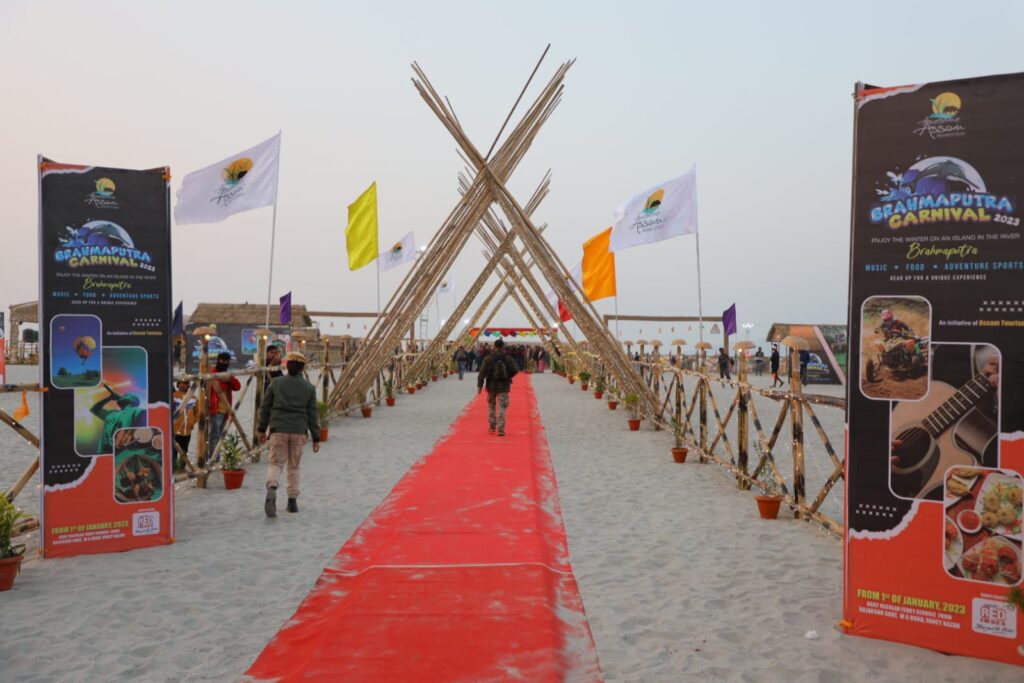Nestled in the northeastern region of India lies Assam, a state rich in culture and heritage. Amidst its lush green landscapes and serene Brahmaputra river, Assam is adorned with a vibrant tapestry of traditions, one of which is the elegant attire known as Mekhela Chador. Rooted deeply in Assamese culture, the Mekhela Chador is more than just clothing; it embodies the essence of tradition, craftsmanship, and grace.
Origins and Significance:
The Mekhela Chador consists of two main pieces of cloth: the Mekhela, which is worn as a skirt, and the Chador, draped over the upper body like a saree. The origins of this attire can be traced back centuries, reflecting the rich cultural heritage of Assam. Traditionally, it was worn by women of all ages and symbolized elegance and grace.
The significance of the Mekhela Chador goes beyond its aesthetic appeal. It is deeply ingrained in Assamese society, representing the ethos of simplicity, resilience, and cultural pride. The intricate motifs and patterns woven into the fabric
often depict elements of nature, such as flowers, animals, and geometric designs, reflecting the close bond between the Assamese people and their natural surroundings.
Craftsmanship and Weaving Traditions:
Central to the beauty of the Mekhela Chador is the craftsmanship involved in its creation. Handloom weaving has been a traditional art form in Assam for centuries, passed down through generations of skilled artisans. The process of weaving
Mekhela Chador is intricate and time-consuming, requiring meticulous attention to detail.
One of the most renowned weaving traditions in Assam is the Eri silk weaving, which produces a soft and durable fabric perfect for Mekhela Chador. The use of natural dyes derived from plants and minerals adds to the allure of these garments, creating a unique blend of colors that are both vibrant and earthy.
Symbol of Identity and Tradition:
For the women of Assam, wearing the Mekhela Chador is not just a fashion statement but a reaffirmation of their cultural identity. Whether worn on special occasions like weddings and festivals or as everyday attire, the Mekhela Chador is a symbol of tradition and heritage.
In recent years, there has been a renewed interest in promoting traditional handloom textiles like the Mekhela Chador, both within India and on the global stage. Initiatives aimed at preserving traditional weaving techniques and
empowering local artisans have gained momentum, ensuring that this ancient craft continues to thrive in the modern world.
Adapting to Modern Times:
While the Mekhela Chador remains deeply rooted in tradition, it has also evolved to suit the changing times. Contemporary designers have infused new elements into the design, experimenting with different fabrics, colors, and patterns to cater to diverse tastes and preferences.
Furthermore, the versatility of the Mekhela Chador has made it a favorite among fashion enthusiasts worldwide. From runways to red carpets, this timeless attire has captured the imagination of designers and celebrities alike, bringing global attention to the rich cultural heritage of Assam.
Conclusion:
In the heart of Assam beats the rhythm of tradition, and at the center of it all is the Mekhela Chador. More than just a piece of clothing, it is a living legacy, a testament to the craftsmanship, resilience, and cultural pride of the Assamese people. As it continues to weave its way into the fabric of modern society, the Mekhela Chador stands as a symbol of tradition, beauty, and timeless elegance.





